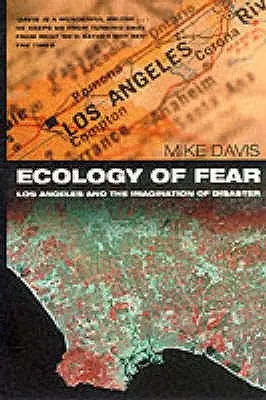Ecology of Fear
By (author): "Mike Davis"
Publish Date:
1998
ISBN0330376551
ISBN139780330376556
AsinEcology of Fear
Original titleEcology of Fear: Los Angeles and the Imagination of Disaster
The 1990s have not been kind to Los Angeles. As Mike Davis writes, "The destructive February 1992, January 1993, and January 1995 floods ($500 million in damage) were mere brackets around the April 1992 insurrection ($1 billion), the October-November 1993 firestorms ($1 billion) and the January 1994 earthquake ($42 billion)." But, he argues, the increasing fear about nature's reign of terror in Southern California reflected in Hollywood's preoccupation with apocalypse--L.A. has been destroyed on screen by everything from lava (Volcano) to nukes (Miracle Mile) to alien death rays (Independence Day)--is in reality a strong case of denial. Again, Davis himself says it best: "For generations, market-driven urbanization has transgressed environmental common sense. Historic wildfire corridors have been turned into view-lot suburbs, wetland liquefaction zones into marinas, and floodplains into industrial districts and housing tracts. Monolithic public works have been substituted for regional planning and a responsible land ethic. As a result, Southern California has reaped flood, fire, and earthquake tragedies that were as avoidable, as unnatural, as the beating of Rodney King and the ensuing explosion in the streets." As in City of Quartz, his earlier book about Los Angeles, Davis reveals the deeper ideological narratives behind historical events. Whether he's explaining the motivations behind the persistent refusal of civic leaders to admit that a tornado alley runs down the middle of the region, from Long Beach to Pasadena, or discussing, as one chapter refers to it, "the case for letting Malibu burn," he outlines his arguments with a fascinating amount of detail and a subtle sense of irony. There are wonderful chapters here, such as "Maneaters of the Sierra Madre," a zoology of the wild beasts Angelenos fear, including mountain lions that descend from the hills to eat joggers and small children, swarms of Africanized killer bees making their way across the deserts, and El Chupacabra, the "goat-sucking vampire" that joined L.A.'s roster of faddish icons in 1996. Although this book is specifically about Los Angeles, its lessons about the relationship between urban developments and natural ecosystems and about the dangerous influence of class politics on environmental safety policy are applicable to any city. Anyone with a serious interest in natural history or urban policy should make a point of reading this book. --Ron Hogan
